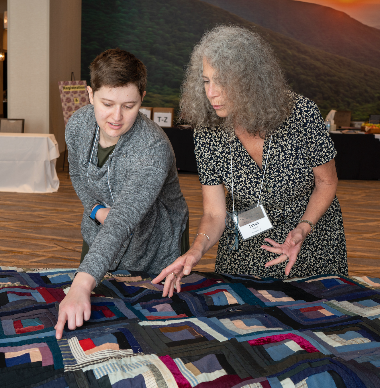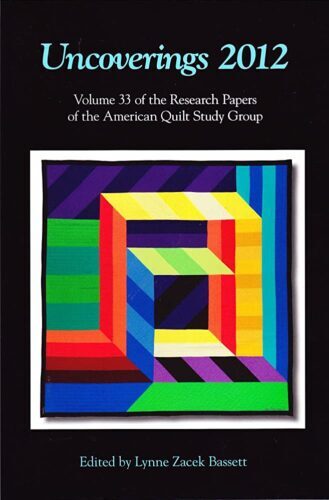Preface
The authors published in this volume presented their papers at the annual seminar of the American Quilt Study Group in Lincoln, Nebraska, in 2012. On the surface, it would seem that these four studies represent widely divergent topics, but in fact, their subjects are connected by common threads.
The intention to relate an historical event or tell a story through quilts is a topic explored by two papers. Kitty Ledbetter examines textiles printed with Mexican War subjects, used in quilts from the Winterthur Museum collection and the Winedale Quilt Collection at the Briscoe Center for American History, University of Texas. Gloria Comstock Craft examines the motivation and process of Hortense Horton Beck in making her ”museum picture” quilts-reproductions of America’s masterpiece applique quilts, “with scenes of people, animals, buildings, and floral arrangements that told a story.”
Examining a public reaction to war arises again in the paper of Mary Ellen Ducey and Joan Laughlin, who strive to solve the mystery of “The Palladian Quilt.” Made soon after World War I, this quilt likely honors a man who, along with many other Americans in the second decade of the 20th century, questioned the necessity of the United States’ participation in the war-a horrifyingly bloody conflict brought on by European imperial ambitions and, in the minds especially of those Americans involved in the new labor unions, the desire of “the capitalistic class” to expand their markets. Military leaders from the Mexican War are heroicized in the prints examined by Kitty Ledbetter. Like World War I, Americans were divided over the Mexican War. In the end, the war had a tremendous impact on American history and culture, fulfilling the belief in Manifest Destiny but adding greatly to the tensions that ultimately brought about the Civil War. The Quilt Revival of the last quarter of the 20th century is discussed in two papers, though with completely opposite subjects. While Hortense Horton Beck made her magnificent reproductions of historic quilts, nine California artists broke new ground with their art quilts, as examined by Nancy Bavor. For all of these women, quilting answered a personal need to create art and to mentor the next generation-though one did this by looking back, and the others did this by looking forward. Together, these papers reveal how quilt studies offer valuable insights into history as well as contemporary issues. Lynne Zacek Bassett Editor
Table of Contents:
Uncoverings 2012 Volume 33 – Common Threads by Nancy Bavor
Uncoverings 2012 Volume 33- Hortense Horton Beck Tells Her Story by Gloria Craft Comstock
About the Author:
Lynne Zacek Bassett is an independent scholar specializing in New England’s historic costume and textiles. From 1995-2000 she was the curator of textiles and fine arts at Old Sturbridge Village in Sturbridge, Massachusetts, where she was responsible for the exhibition and accompanying book, Northern Comfort: New England’s Early Quilts, 1780-1850 .Since 2007, Lynne has been the guest curator of costumes and textiles for the Wadsworth Atheneum Museum of Art in Hartford, Conecticut, where she is currently working on her seventh exhibition for the museum, Dressing Romantically: American Costume, 1810-1860. Lynne was the editor and primary author of Massachusetts Quilts: Our Common Wealth (2009). In 2012 appeared Homefront & Battlefield: Quilts & Context in the Civil War, co-authored by Lynne and Madelyn Shaw and published by the American Textile History Museum of Lowell, Massachusetts. She holds a BA in American studies from Mount Holyoke College and a MA in costume and textile history from the University of Connecticut.



